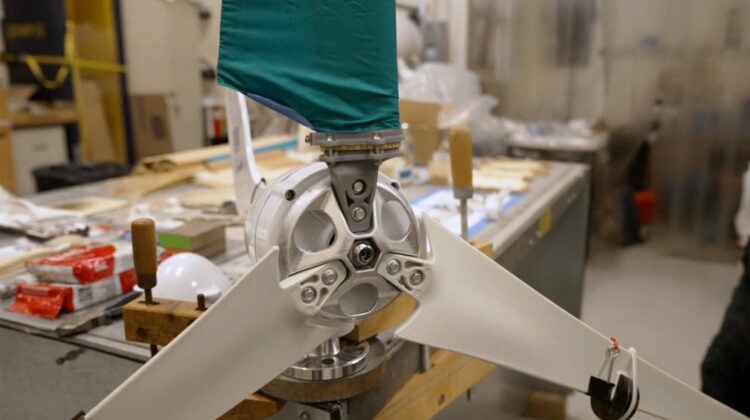
Researchers from the University of California, Davis, are working to develop compostable, ecologically sound wind-turbine blades from bamboo and mycelium, the fungal root-like system that bears mushrooms.
Wind is one of the fastest growing sources of renewable energy around the globe and the expanding role of wind is largely good news. However, an environmentally sound solution is needed for the exponentially growing number of wind blades bound for landfills.
Wind turbine blades are huge. In 2021, the average rotor diameter in the USA was 127 metres, so a single blade is almost as big as a Boeing 747’s wingspan. Designed to be able to withstand heavy winds and weather conditions, the blades have a lifespan of about 20 years. Most are constructed using a composite structure of fiberglass/epoxy built on top of balsa wood, which adds stability and flexibility. Recycling options are very limited, costly and incur the additional carbon footprint impacts of transportation.
Most wind turbine blades end up in landfill. According to a recent study, in the USA alone, more than two million tonnes of decommissioned blades are projected to be sent to landfill by 2050; globally, the mass of all the blades expected to be retired by 2050 may be as high as 43 million tonnes. The use of balsa wood has an additional, devastating ecological impact. Rapid growth in the wind-power industry has caused overlogging in the Ecuadorean Amazon rainforest, resulting in unchecked deforestation and societal harm to Indigenous communities in the region. Some manufacturers have been switching to PET plastics, adding to the millions of tonnes of PET waste in the environment.
‘We want to have clean energy, but clean energy cannot pollute the environment, and it can’t cause deforestation,’ said Valeria La Saponara, a professor in the Department of Mechanical and Aerospace Engineering. ‘If we’re doing clean energy, it’s not to deforest the Amazon rainforest. We want to be good citizens for everybody.’
La Saponara envisions a compostable wind turbine blade built with woven bamboo, mycelium and biomass from the agricultural waste from California’s Central Valley in place of fiberglass and balsa wood. She first began working with mycelium in 2019, when she sought an alternative to the fossil-based plastics of bike helmet liners. Mycelium is an amazingly versatile substance and La Saponara’s lab has been researching possibilities to leverage it as a low-carbon-emission, low-toxicity, compostable alternative to non-degradable materials such as polyurethane and acrylic.

Scaling up to a project as large and complex as wind-turbine blades is a next-level move involving a highly collaborative group. ‘The project is mushrooming,’ La Saponara joked. ‘Creating this design requires work from multiple disciplines.’
In addition to co-principal investigator Michele Barbato in the Department of Civil and Environmental Engineering, who will support structural development, and research engineer Shuhao Wan, the project includes a diverse group of student researchers in engineering and design.
As luck would have it, La Saponara has a highly multidisciplinary researcher in her team who’s also a skilled bamboo artisan: Shuhao Wan, the lab’s instrumentation and design research engineer, has worked with bamboo as a hobby, crafting model ships in bottles. Wan is testing different ways to weave the bamboo reeds.

Meanwhile, the team is working on optimising media for growing and attaching the mycelium layer. Mycelium is an amazing material because it can be grown where it’s going to be used – as long as the conditions are right. The fungal mass can thrive in a variety of waste streams, from coffee grounds to discarded plastics, with its feedstock influencing its properties. But mycelium doesn’t eat everything, and naturally anti-fungal bamboo isn’t on the menu. The team is testing ways to incorporate post-consumer textile waste, which may offer the bonus outcome of growing the mycelium using waste otherwise bound for landfill.

The team recently built a prototype to begin testing. ‘We want to do structural testing to find out how fast a rotation we can have, how much power we can generate,’ La Saponara said.
The mycelium-bamboo composite will replace blades on a commercial one-kilowatt turbine set up. La Saponara said that they will also test the resilience of these blades, making sure that they can withstand 137 km/h winds.
‘Once we have the proof of concept for one kilowatt, which is a reasonable amount of power, then we can start working with companies for the commercialisation of this concept for distributed-energy applications,’ La Saponara said.
According to the researchers, the blades could help in areas affected by natural disasters, where energy solutions are needed quickly, and wind power could be paired up with solar panels.


